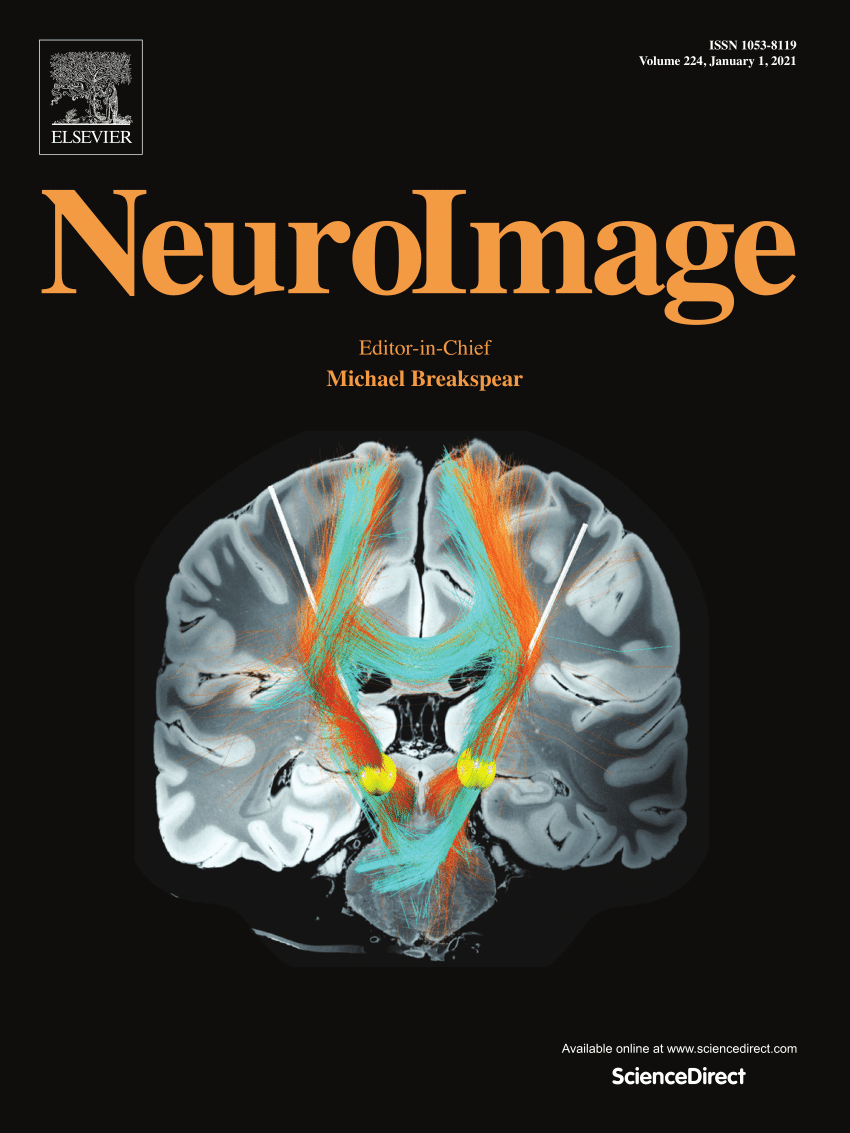Dynamic Causal Tractography Analysis of Auditory Descriptive Naming: An Intracranial Study of 106 Patients
IF 4.7
2区 医学
Q1 NEUROIMAGING
引用次数: 0
Abstract
Humans understand and respond to spoken questions through coordinated activity across distributed cortical networks. However, the causal roles of network engagements alternating across multiple white matter bundles remain understudied at the whole-brain scale. Using intracranial high-gamma activity recorded from 7,792 non-epileptic electrode sites in 106 epilepsy patients who underwent direct cortical stimulation mapping, we constructed an atlas visualizing the millisecond-scale dynamics of functional coactivation and co-inactivation networks during a naming task conducted in response to auditory questions. This atlas, termed the Dynamic Causal Tractography Atlas, identified functional coactivation patterns within specific time windows that were most strongly associated with stimulation-induced language and speech manifestations (p-value range: 2.5 × 10-5 to 6.6 × 10-14; rho range: +0.54 to +0.82). The atlas revealed that no single intra-hemispheric fasciculus was consistently engaged in all naming stages; instead, each fasciculus supported specific stages, with multiple distinct major fasciculi simultaneously contributing to each stage. Additionally, this atlas identified the specific linguistic stages and fasciculi where handedness effects became evident. Our findings clarify the dynamics and causal roles of alternating, coordinated neural activity through specific fasciculi during auditory descriptive naming, advancing current neurobiological models of speech network organization.
听觉描述性命名的动态因果图分析:106例颅内研究。
人类对口语问题的理解和回答是通过分布在大脑皮层网络上的协调活动完成的。然而,在全脑范围内,网络接触在多个白质束之间交替的因果作用仍未得到充分研究。我们利用106例癫痫患者的7,792个非癫痫性电极的颅内高伽马活动记录,构建了一幅图,显示了在回答听觉问题时进行命名任务时功能共激活和共失活网络的毫秒级动态。该图谱被称为动态因果神经束图图谱,在特定的时间窗内确定了与刺激诱导的语言和言语表现最密切相关的功能共激活模式(p值范围:2.5 × 10-5至6.6 × 10-14;Rho范围:+0.54至+0.82)。图谱显示,没有一个半球内束在所有命名阶段都是一致的;相反,每个束支持特定的阶段,多个不同的主要束同时对每个阶段做出贡献。此外,该图谱确定了特定的语言阶段和偏向手的影响变得明显的神经束。我们的研究结果阐明了在听觉描述性命名过程中,通过特定神经束的交替、协调的神经活动的动态和因果作用,推进了当前语音网络组织的神经生物学模型。
本文章由计算机程序翻译,如有差异,请以英文原文为准。
求助全文
约1分钟内获得全文
求助全文
来源期刊

NeuroImage
医学-核医学
CiteScore
11.30
自引率
10.50%
发文量
809
审稿时长
63 days
期刊介绍:
NeuroImage, a Journal of Brain Function provides a vehicle for communicating important advances in acquiring, analyzing, and modelling neuroimaging data and in applying these techniques to the study of structure-function and brain-behavior relationships. Though the emphasis is on the macroscopic level of human brain organization, meso-and microscopic neuroimaging across all species will be considered if informative for understanding the aforementioned relationships.
 求助内容:
求助内容: 应助结果提醒方式:
应助结果提醒方式:


